By Rick VanSickle
Like a lot of industries on the entire damn planet, Ontario wineries have profoundly changed the way they do business in the face of COVID and its over-extended stay.
Note: Also in this report, we take a close look at the first wine from Niagara’s newest ultra-luxe wine brand, AMO, plus our picks of Niagara wines from the Vintages release on Saturday.
Closures, re-starts, rule changes, hope, fear and seasonal consternation is the new reality for wineries, which have had to pivot countless times over the course of a pandemic that has been with us now for 18 excruciating months and counting. Fear of the variant has now cast yet another black cloud over the notion of normalcy returning anytime soon.
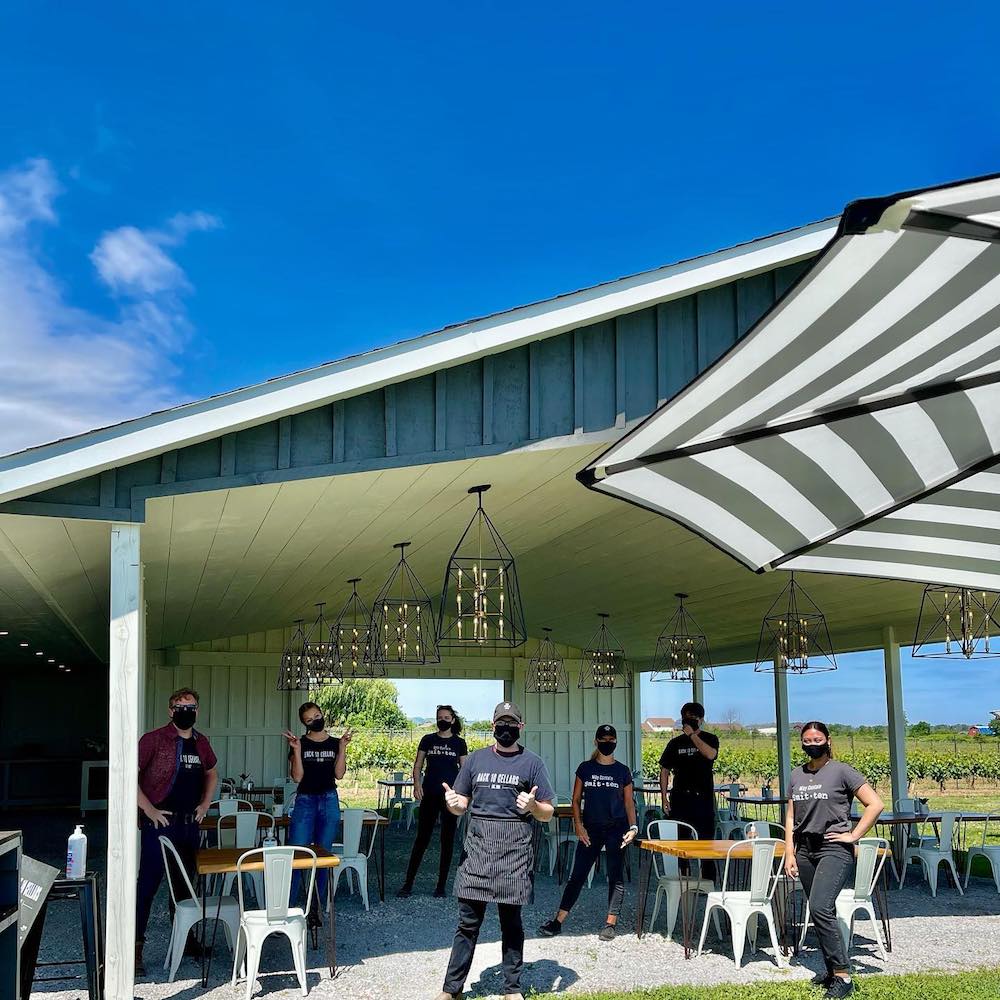
Summer has been a blessing for wineries as most activities, tastings, dining and touring have moved entirely outdoors. As I travel throughout the peninsula, I am a little surprised at the abandonment of caution; the lack of masks, the crowded spaces outdoors, and in some cases, indoors in the retail and tasting areas. Yes, Ontario is doing well with vaccinations. Yes, rules are being followed (somewhat). Yes, we trust that unvaccinated consumers are using their best judgment when participating in crowded situations. But on this last point, there are growing calls to add another layer of safety for tasting indoors. And as we hurdle closer and closer to (gasp!) fall and cooler temperatures, wineries have tough calls to make. Bring consumers indoors (some have already, some not at all) or provide more heating for another round of outdoor winter follies.
The easy and safest (but, yes, politically charged) answer is to have a vaccination passport system in place and shut out the unvaccinated from indoor tastings at wineries. It’s already happening in other parts of Canada. Unvaccinated residents in Quebec will be denied access to non-essential public spaces such as bars, restaurants and gyms as of Sept. 1.

For his part, Prime Minister Justin Trudeau says the federal government has no plans to implement vaccine passports. According to Trudeau, standardizing such a measure could have “real divisive impacts” for Canada and its communities. “I think it’s an interesting idea but I think it is also fraught with challenges — we are certainly encouraging and motivating people to get vaccinated as quickly as possible but we always know there are people who won’t get vaccinated and not necessarily through a personal or political choice,” Trudeau said, before he launched an election, which now it appears passports will be an election issue.
Ontario is in the midst of more than three straight weeks of growth in daily COVID-19 cases — primarily in people who have not been vaccinated, according to a Toronto Star report.
And with the number of new cases currently doubling every 10 days, Dr. Peter Juni, scientific director of the science table, warns the province could see as many as 1,200 new cases per day by the time school resumes in less than a month. That’s up from a current average of just over 300.
The prospect of going back into lockdown has prompted a wave of businesses and countries worldwide insisting on workers and citizens being fully vaccinated.
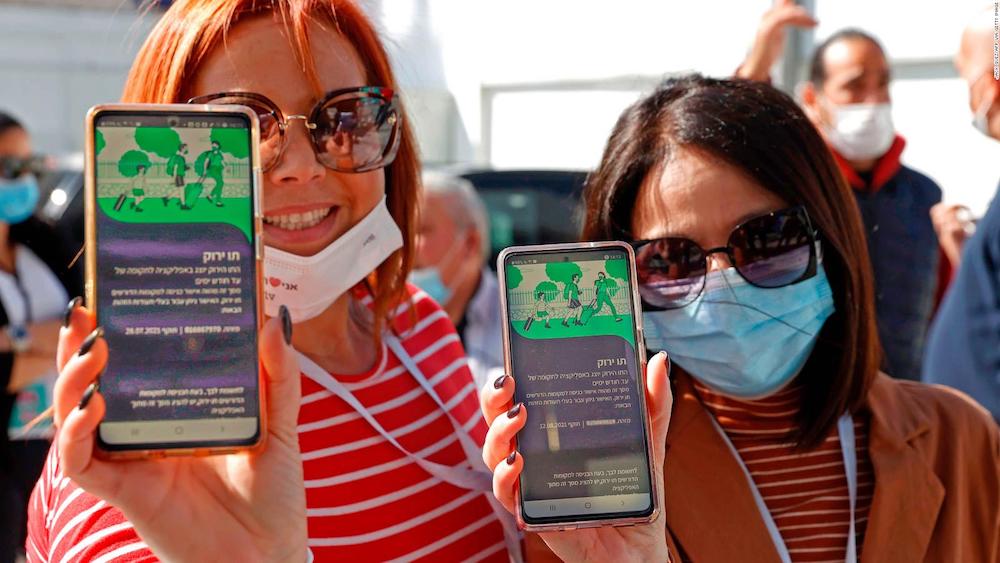
Microsoft, Salesforce and Oracle are among several big names in the U.S. to announce work on a project to verify whether or not a person has had their shot. Israel, which has been among the fastest to vaccinate its citizens against the virus, also recently unveiled a “green passport” which would allow vaccinated persons to eat in restaurants, attend public events and travel freely. Denmark announced last week that it was working on developing a digital “vaccine passport” for those who have received their shot, while a proposal for a vaccine pass allowing free travel across the European Union was pushed by the Greek prime minister Thursday.
While Trudeau has ruled out, for now, a national vaccination, other provinces beyond Quebec have not yet dismissed the possibility of issuing such a pass, with Ontario’s health minister announcing a plan to issue certificates that could allow vaccinated Canadians in the province to travel, work and be in close contact spaces.
As it is now in Ontario, you receive two emails for each shot you have received and you can print them out and carry them around, if you want, but I am not certain they are tamper proof or accepted as proof of vaccination. UPS announced recently that it will make copies of the documents, reduce them in size and laminate them to fit in your wallet. But, really, what good is that if no one knows for sure that these are acceptable forms of proof?
I do not know of any winery in Niagara implementing a system for vaccinated only guests in their tasting rooms. How would you prove it?
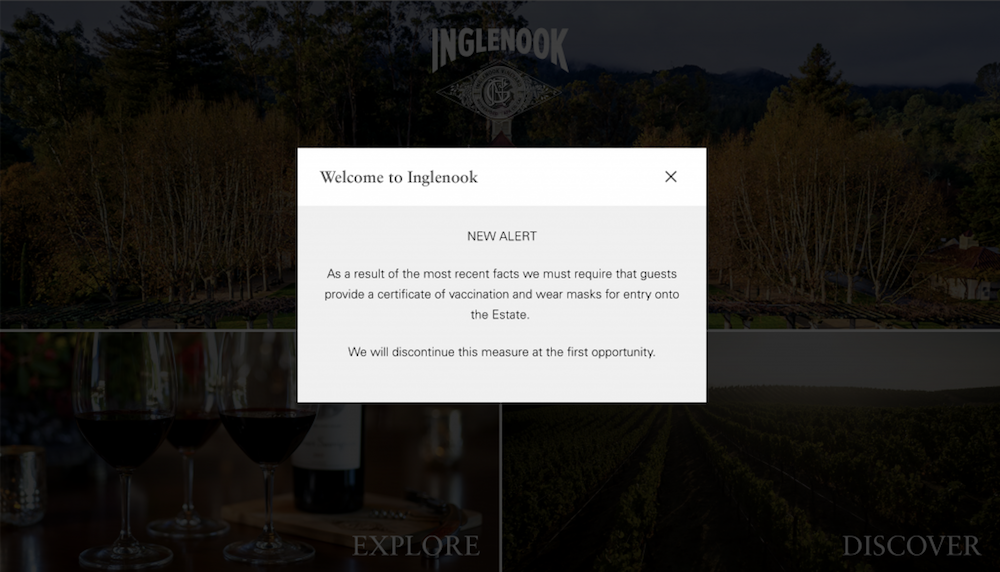
The Inglenook winery in Napa Valley was the first in California to allow only guests inside the tasting room with proof of vaccination. In light of that, I conducted a very informal discussion among Facebook “friends” to gauge tolerance for a vaccination program in Ontario wineries.
The two questions posed were:
1) Inglenook in Napa Valley is the first winery in California to only allow guests inside the tasting room who have proof of vaccination. With cases on the rise here in Ontario and fears of the variant spreading quickly, would you (as a winery) implement such measures if there was a way for consumers to prove they been vaccinated?
2) As a consumer, would you be more likely to attend an indoor tasting (where masks come off when tasting and spitting) if there was a proof of vaccination policy?
Here are a few of the responses.
Duarte Da Silva, who is the executive director of the Prince Edward County Winegrowers Association (PECWA), said: “It’s been a discussion in PEC like everywhere else. Personally, I would have no problem recommending it to PECWA members to protect themselves, their staff and guests. As we head into September and it starts to get colder, people will want to move inside. A federal or provincial mandate would make the decision easier.”
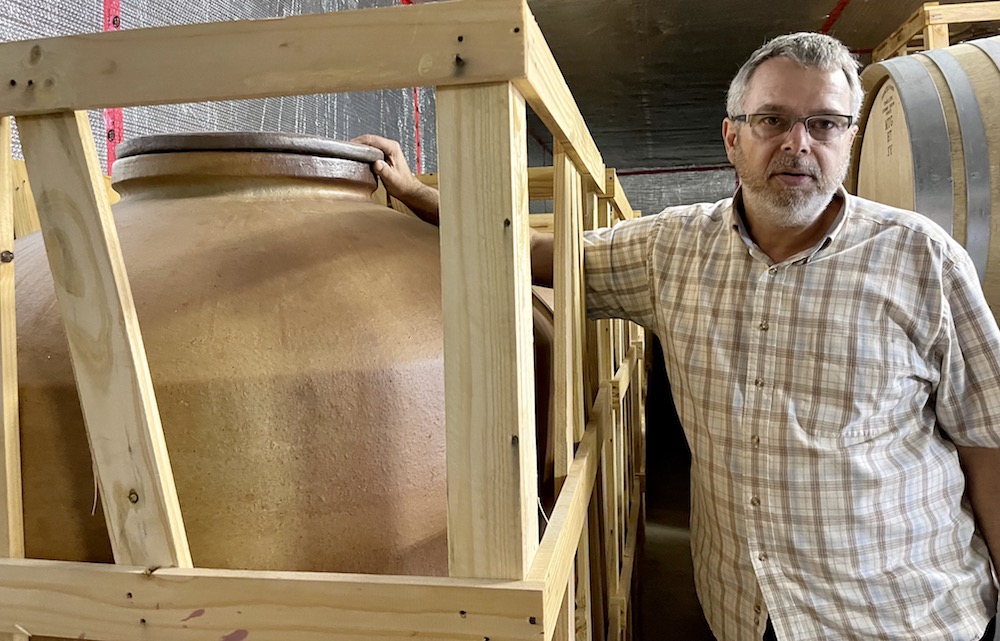
Ron Giesbrecht, above, a Niagara College wine professor and partner in the new Niagara winery Wending Home, said: “My personal opinion is that I would like to see mandatory double vaccinations and a provincial vaccine passport. BUT … as a purveyor of wine, I want to provide an accommodated way for all customers to safely access the product if not the winery itself. I think that might be the majority view. In essence — keep us safe, give us maximum access, be as accommodating as possible given the first two conditions.”
Shawn McCormick, an engaged consumer, said: “I’d prefer to not taste inside at all … as others have mentioned, even those (who) are double vaccinated can carry the Delta variant and infect others. At some point I will be ready to go back but not just yet.”
Alex Sproll, owner of Trail Estate in Prince Edward County, said: “I’d rather government do their job and stop offloading liability … and responsibility. Just me though, but yes, were it delegated I have no problem with people asking.”
Christina Brooks, owner of Niagara’s Back 10 Cellars with her husband Andrew, said: “We will continue to be open outside until it’s -5 out. IF & WHEN it is safe enough for us to open inside, I would want only double vaxxed people tasting. Our entire staff is double vaxxed. I would need to know that we would all be keeping one another as safe as possible with close proximity and touching glassware.”
Peter A Rod, a Niagara wine prof and sommelier, said: “I am in favour of a passport for ‘high risk’ domestic indoor activities such as restaurants, wineries, breweries, bars, gyms, etc. just as I am for all international visitors arriving in Canada or Canadians travelling to other countries. I must say however, it does concern me a little when I think of potential ethical abuses and precedent for other passports in the future. If we can do it for COVID, what other illnesses and health conditions in the future might qualify for a passport?”
Marcel Morgenstern, sales manager for Bella Terra Vineyards in Niagara, said: “It is a shame that these kind of decisions are being pushed down the line to businesses and individuals. We have enough struggles and worries every day. These kinds of decisions should be handled responsibly by our elected officials and their advisors. That’s what we pay them for. It’s not supposed to be a popularity contest, it’s a job!”
Yes, there was at least one comment from someone totally against passports, but 95% of responses were for a government-led vaccination process for Ontario. We just may have to wait until Sept. 20, election day, to get there.
A statement rosé
finally unveiled
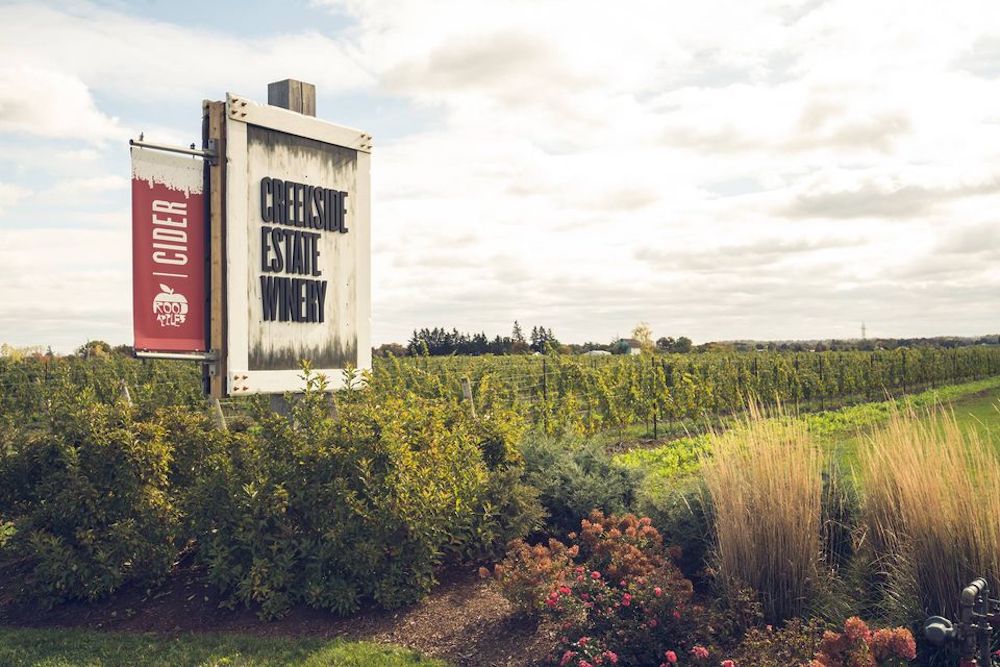
While COVID-19 has wreaked havoc on the Ontario wine industry, it hasn’t stopped the pace of growth. Startups and acquisitions are constantly changing the landscape in Niagara.
The biggest news this summer was the purchase of Creekside Estate Winery, along with sister winery Queenston Mile, plus Shiny Apple cider, by Diamond Estates Wines and Spirits dependent on Diamond raising a minimum total of $8.5 million in equity through private placements. These are two prized Niagara wineries with a veteran winemaking team of Rob Power and Yvonne Irvine. We will be keeping an eye how the purchase impacts either of these wineries down the road.
In other news, a few wineries were born — Ron Giesbrecht and partners Huaying Feng, along with her husband Jianneng Li, released their first wine from Wending Home Estate Winery and Vineyard in Niagara, Creekside and Queenston Mile assistant winemaker Irvine launched the funky virtual winery Maenad Wines featuring a piquette, pét-nat and skin fermented white wine (I’m tasting these wines shortly and will bring you a report on this project soon), and just now, the much anticipated AMO Wines, began its journey from vineyards on the St. David’s Bench with the release of the first wine — a rosé that is packaged beautifully from the gorgeous 2020 vintage.
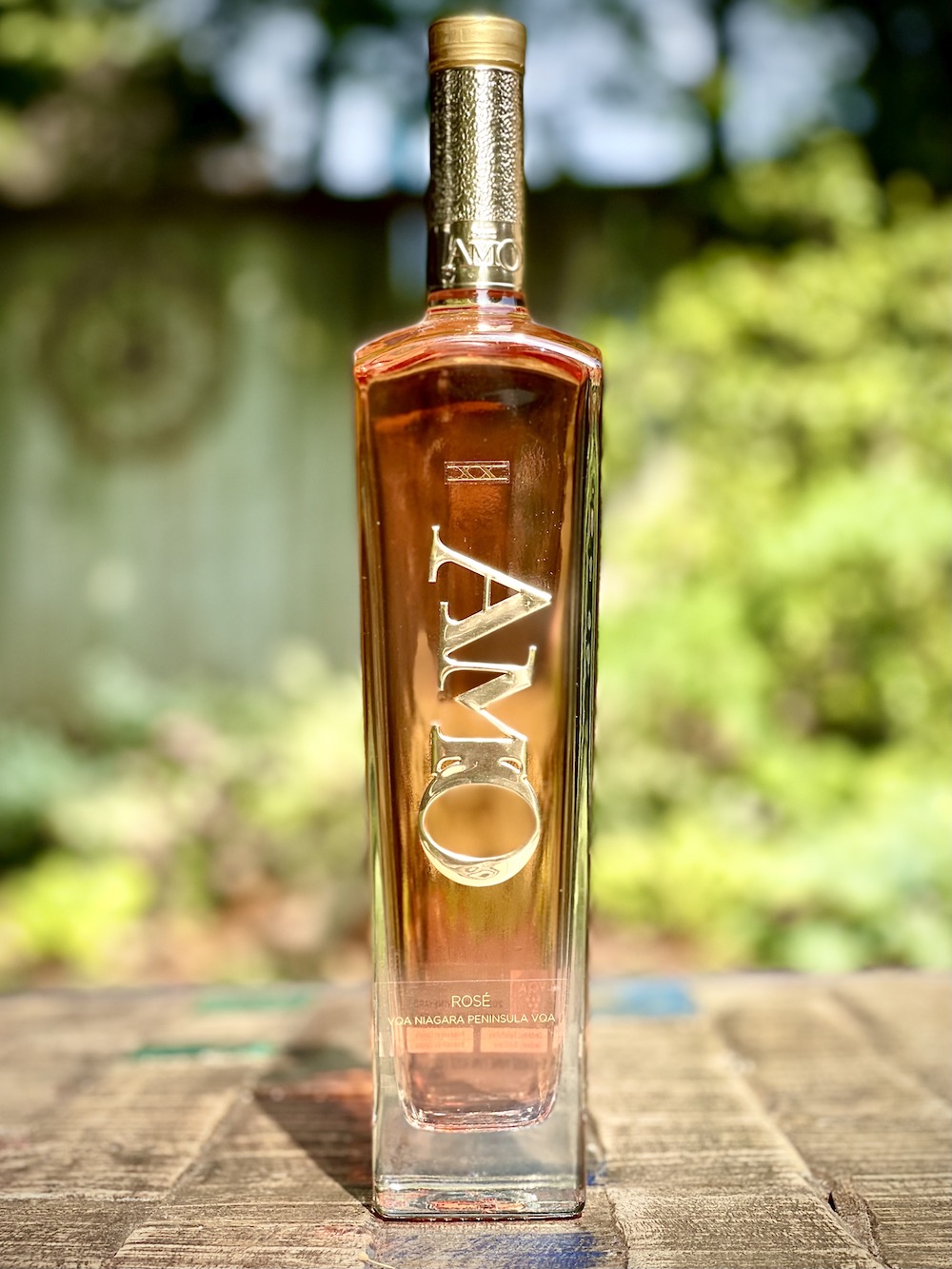
AMO is a project from Tara Colaneri (yes, THAT Colaneri family, the ones that own and operate Colaneri Estate Winery) that for months has been teasing readers on various social media channels with a tantalizing marketing campaign pointing to an ultra-luxe line of fine wines to come.
Using terms like “ignite your senses and fuel your soul” and “what makes your heartbeat,” AMO, which means love in Italian, is built “on creating moments that radiate the love of life with those we cherish,” according to the marketing material.
The wines are crafted by winemaker Marc Pistor using grapes from the estate’s 20-acre vineyard that was planted in 2018. It’s located on the St. David’s Bench.
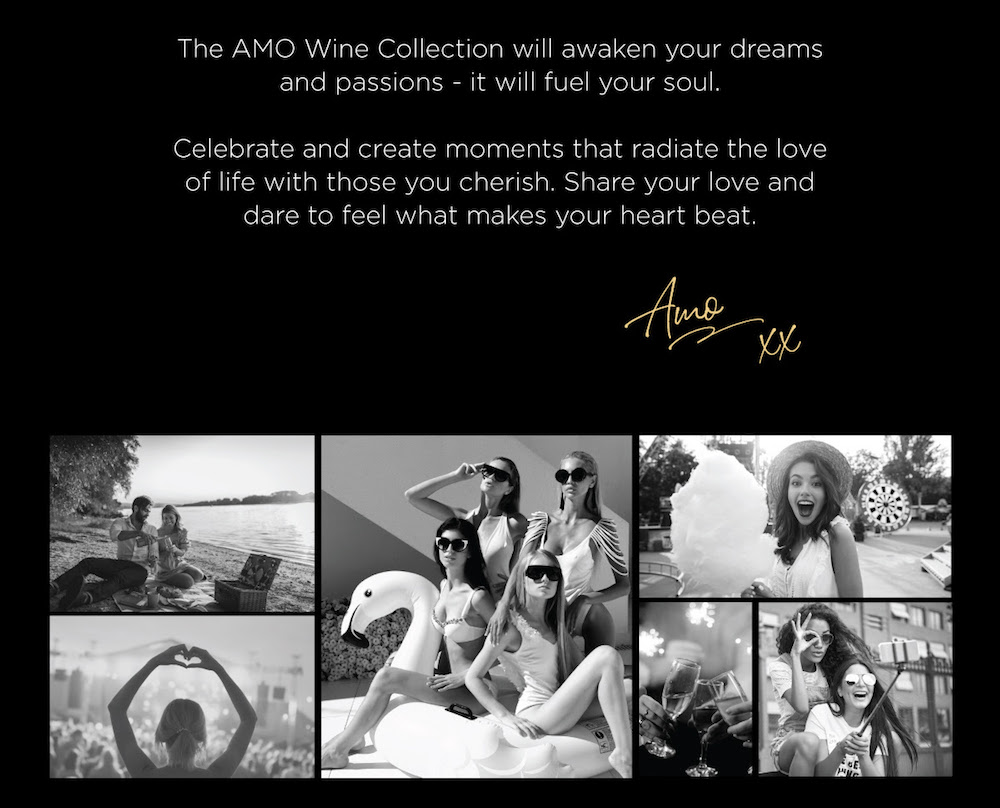
“Our wines are the ultimate expression of the art of winemaking with both love and craftsmanship in the vineyard and the cellar,” the marketing information says. “Premium vitus vinifera grapes are tended to using time honoured traditional methods and handpicked from a single vineyard. Not only is there extra love in the wine but each bottle has been embellished and handcrafted by family and friends.”
AMO is releasing one bottle at a time with the rosé the first out of the gate. To follow will be Riesling, Pinot Gris, Pinot Gris Sparkling, Cabernet Franc Sparkling and Cabernet Franc, all from the inaugural 2020 vintage.
The rosé is made in the saignee method from estate Cabernet Franc, all hand picked and fermented cool to dryness with the yeast strain selected for aromatic complexity and finished at 13.5% abv.
Here’s what will get discussion going in wine circles. The wine is priced at an eye-popping $45 a bottle, easily the highest priced rosé in Canada, certainly that I am aware of, and among the highest in the world. The only other one in Niagara that I am aware of that comes close to that price is the Stratus rosé in magnum at $65. Hell, there aren’t many rosés in the world that fetch $45 per bottle. The Dolce and Gabbana Rosé 2020 from Sicily is $49, the most expensive Provence rosés, the mecca for this style of wine, range in price from $63 (magnum) for the Chateau d’Esclans Whispering Angel to the Rock Angel rosé at $50. Then there’s Guy Bertrand’s Clos de Temple Rosé Cabrieres, noted as the world’s most expensive rosé, at $249 a bottle (at least here in Ontario through an agency). You can also purchase the Lopez de Heredia Viña Tondonia Gran Reserva Rosé 2010 from Rioja, a highly collectible and rare wine, for $1 dollar less at $44 a bottle.
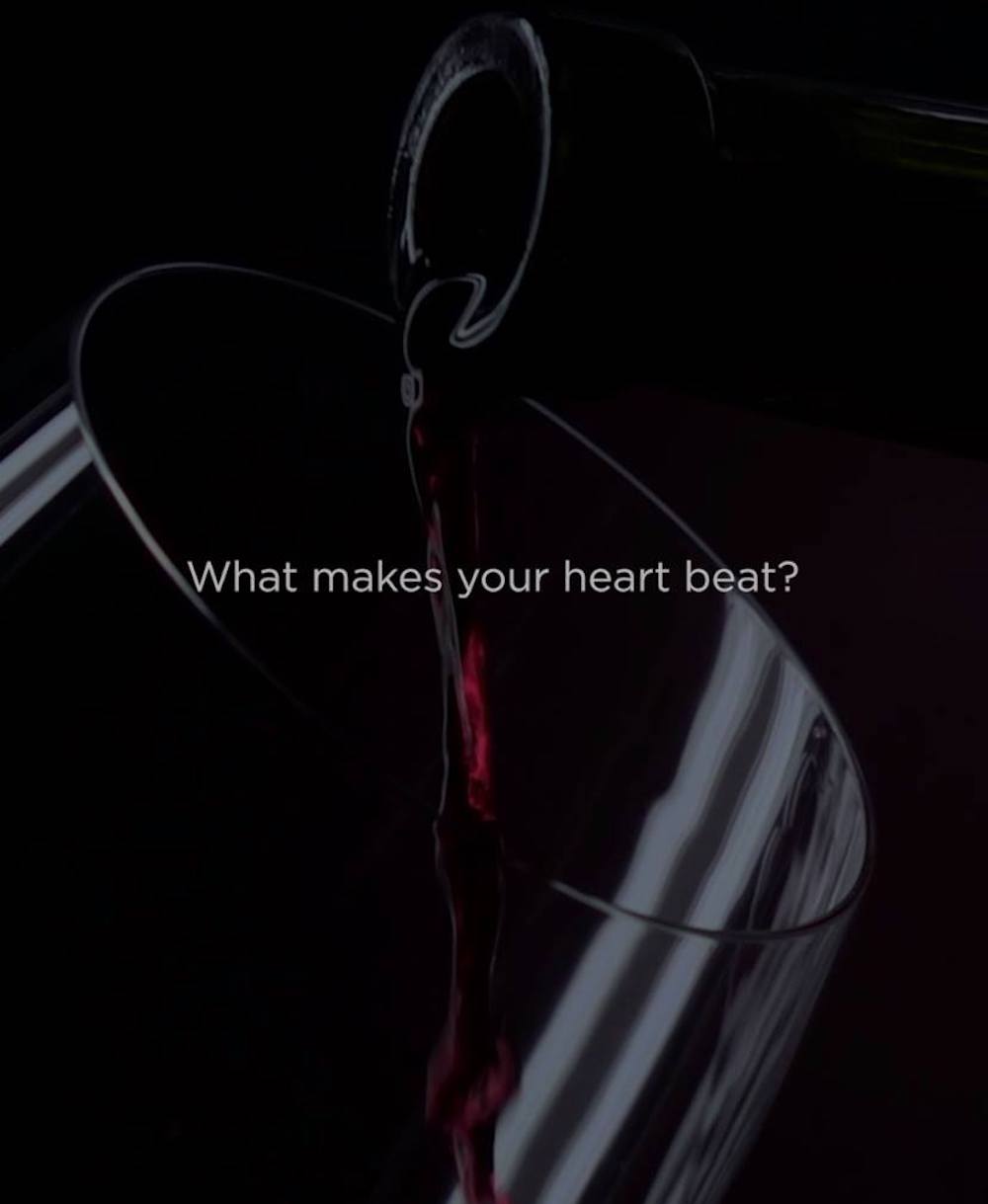
The fact is this: Rosé wines have always offered value for a style of wine usually made to be enjoyed purely as a thirst quencher in the warmer months of the year. The vast majority of rosés reside at the sub-$20 level and up to $25 for single vineyard treatment.
AMO is clearly taking a chance at this price point. There’s no denying the packaging is exquisite. I can’t remember seeing a more beautiful, unique bottle. My sample arrived in a jet-black leather wrapped box that opens to a tall, tapered square bottle that is clear and embossed with the simple AMO words popping from the glass. It’s clean, elegant and designed for the up-market crowd looking to wow guests in an elegant dinner setting. The glass is heavy, cork is chosen as the stopper and a lovely note signed by signed by Tara Colaneri accompanies the wine (at least mine did). It promises something very special.
Consumers will have to decide if this is enough to warrant the $45 price tag. As for the wine? Here are my thoughts.
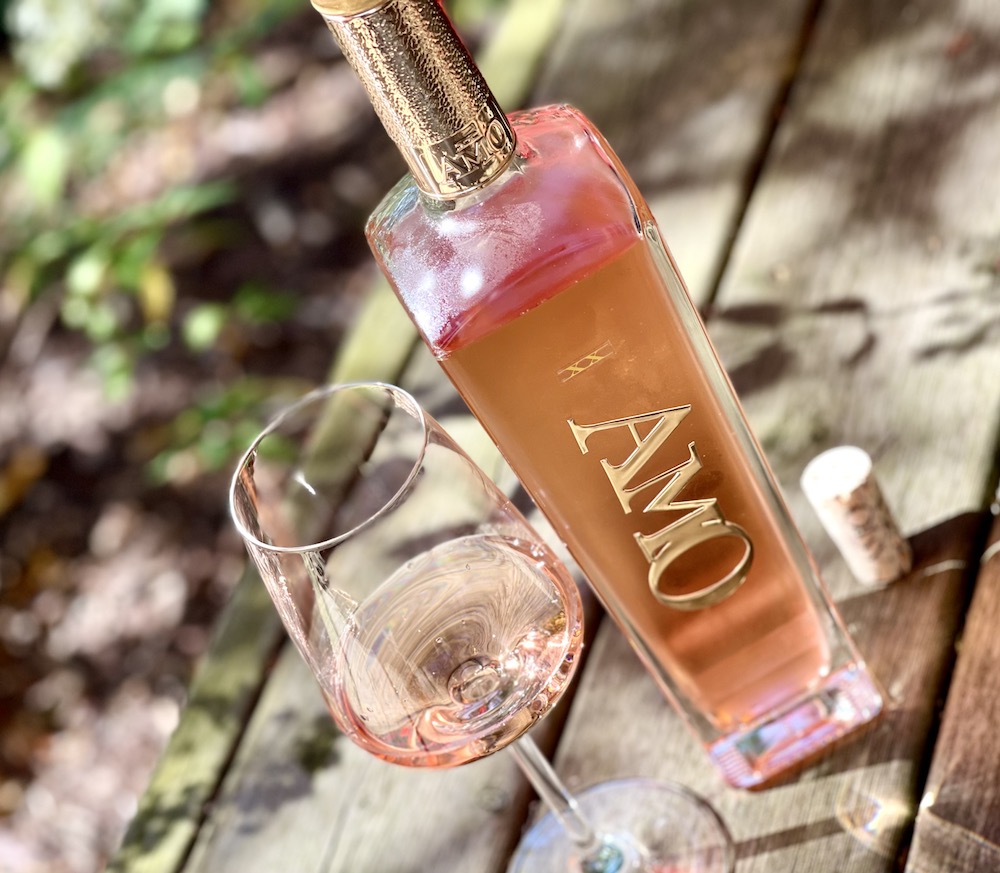
AMO Rosé 2020 ($45, available online here, 92 points) — While it’s listed as Niagara Peninsula wine on the minimalist label, it is actually made from 100% Cabernet Franc picked at the estate farm on the St. David’s Bench. This is the first wine made from the newly planted grapes with others from the brand expected to follow. The fruit was hand picked at 22.8 Brix and sent from the shaker table to the destemmer, which produces whole berries (no crushing). All the fruit was pumped into a stainless steel tank for a red ferment. Fermentation was clean so it was left it to age on the lees until ready to bottle in late June (six months on the lees). It has an attractive nose of strawberry patch, dark cherries, touch of white peach, saline minerality and meadow flowers in a persistent, pretty style. It has lovely, rounded texture on the palate thanks to the extended lees aging and ripeness of the fruit with a richer profile of strawberry shortcake, brambly raspberries and touch of herbs in a relatively dry style driven by juicy acidity on the finish. It has the stuffing to risk cellaring a year to see how it evolves over time.
Our picks of Niagara wines
released at Vintages Saturday

Southbrook Triomphe Organic Cabernet Franc Rosé 2020 ($20, 88 points) — This is mostly Cabernet Franc with a touch of Cabernet Sauvignon and has a bright magenta glow in the glass. It has a pretty nose of strawberries, cherries, wild raspberries and herbs. It’s fairly dry on the palate but loaded with juicy red fruits, herbs and finishing with mouth-watering acidity.

Stoney Ridge The Tragically Hip Ahead By a Century Chardonnay 2019 ($22, 89 points) — Sourced from three different vineyards in Niagara with aging in 50% stainless steel and 50% new French oak barrels for 7.5 months with lees stirring. A comforting, inviting nose of ripe apple, tropical fruits, toasty vanilla bean, buttercream and spices. It has spicy bite on the palate and is backed by rich, ripe apple, lemon tart, tropical notes and a smidge of citrus zest to keep it all lively and vibrant through the core.

Organized Crime The Mischief 2019 ($19, 88 points) — The blend is 53% Riesling (estate), 32 % Gewurztraminer (purchased), and 15% Pinot Gris (estate). As is the case with almost all of winemaker Greg Yemen’s wines, this is a blend of stainless and old wood fermented components. The point here was to make a balanced and easy drinking white wine. I would say, mission accomplished. It has an interesting nose of pear, apple, melon, lemon and subtle lychee and grapefruit. It has a bit of RS on the palate, which plays well with sweet-tart play of apple, pear, grapefruit, touch of ginger and decent acidity on the finish.
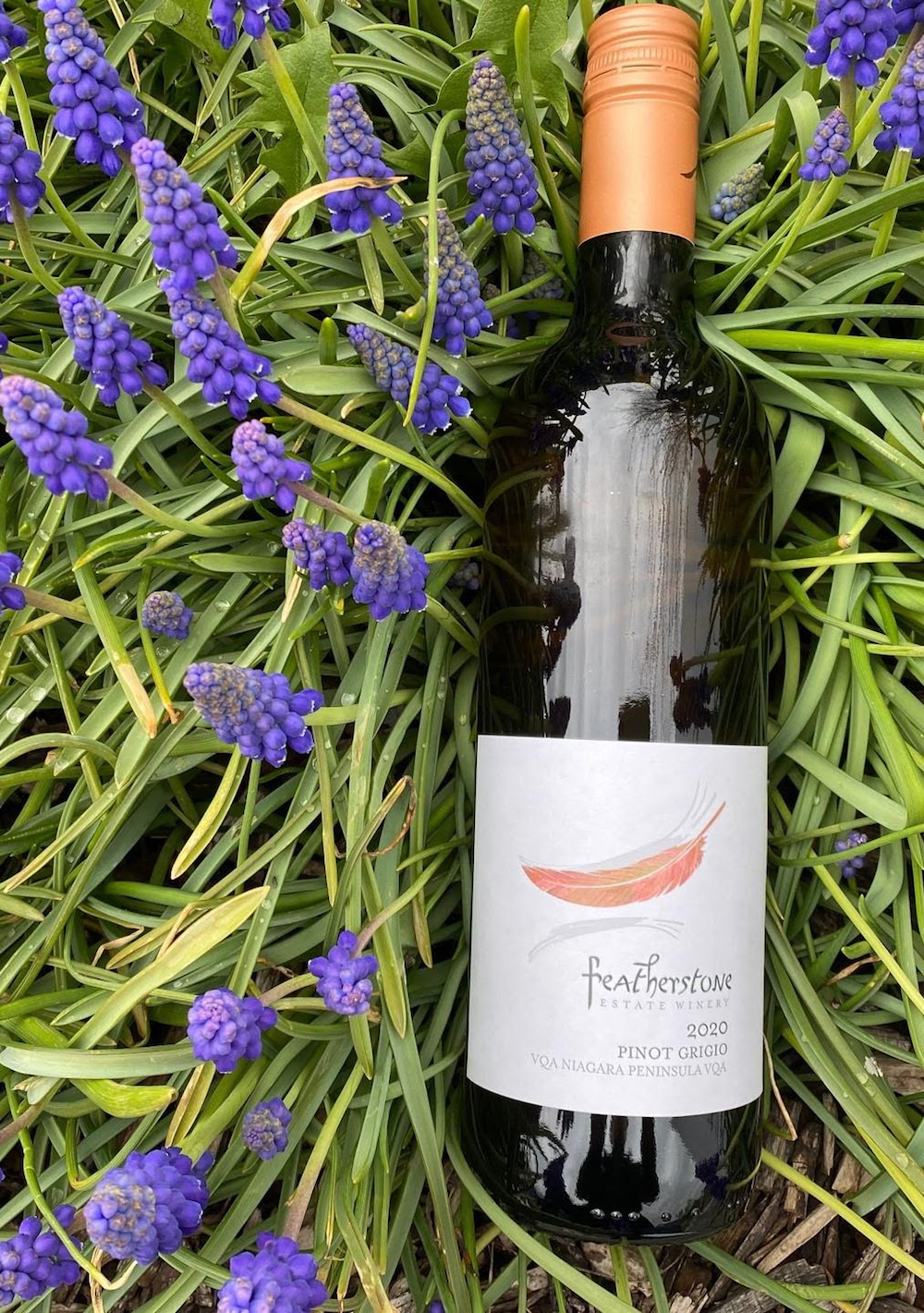
Featherstone Pinot Grigio 2020 ($18, 89 points) — The fruit for this new-to-Featherstone variety was machine harvested and then split into two groups. One half of the grapes were left on the skins to soak, and then pressed. The other half was pressed immediately. It shows a nice pale copper colour in the glass from the skin contact followed by notes of peaches, apples, melon, tangerine and citrus. There is a touch of sweetness on the palate but nicely balanced with a full range of orchard fruits and a touch of citrus zest on the finish.
Also released but not reviewed:
• Vineland Estate Rosé 2020 ($15)
• Fern Walk Sauvignon Blanc 2018 ($17)
• Wildass Riesling 2019 ($19)
• Adamo Parke Vineyard Grower’s Series Pinot Noir 2017, Niagara ($30)
• Inniskillin Montague Vineyard Pinot Noir 2018 ($31)
• Lakeview Cabernet Sauvignon 2017 ($35)
• Organized Crime Cabernet Sauvignon 2018 ($24)
• Palatine Hills Wild & Free Cab/Merlot 2018 ($25)
• Rockway Small Lot Block 11-140 Cabernet Franc 2017 ($25)
• Sue-Ann Staff Fancy Farm Girl Foxy Pink Rosé 2020 ($18)


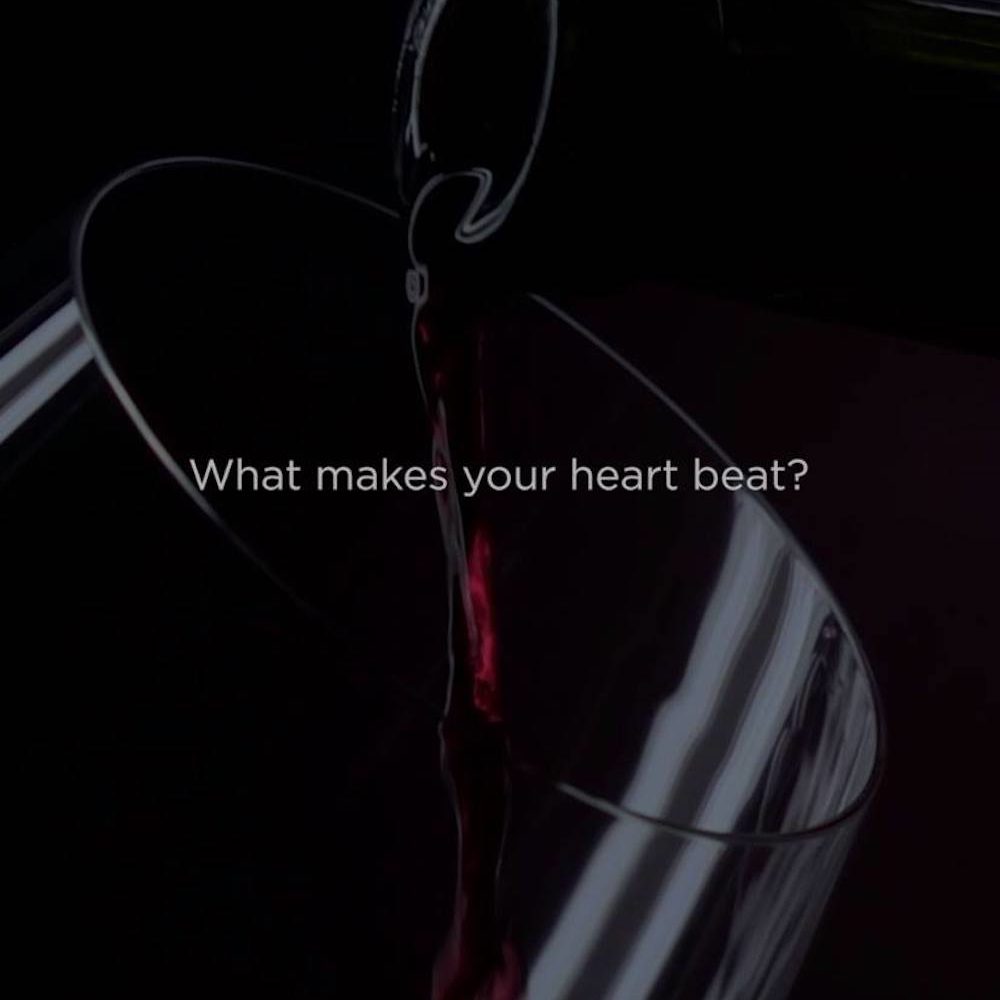



Comment here